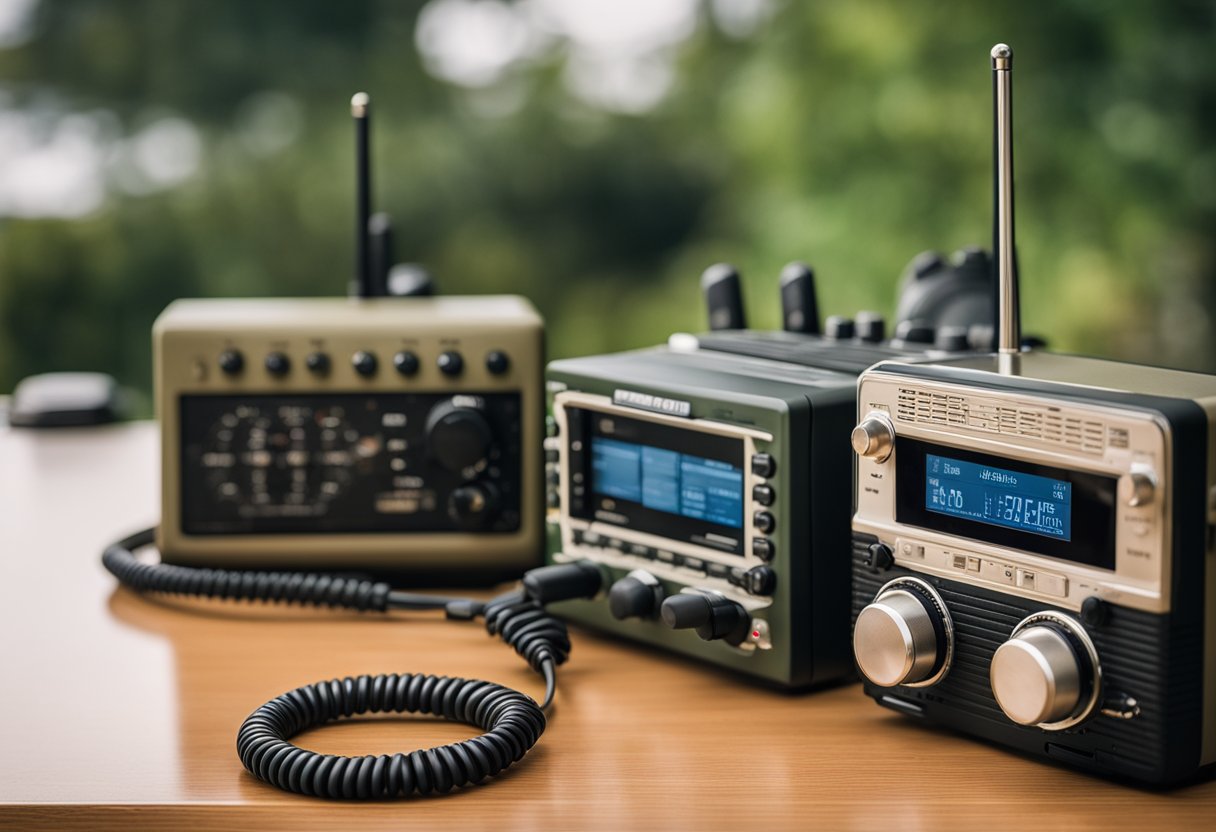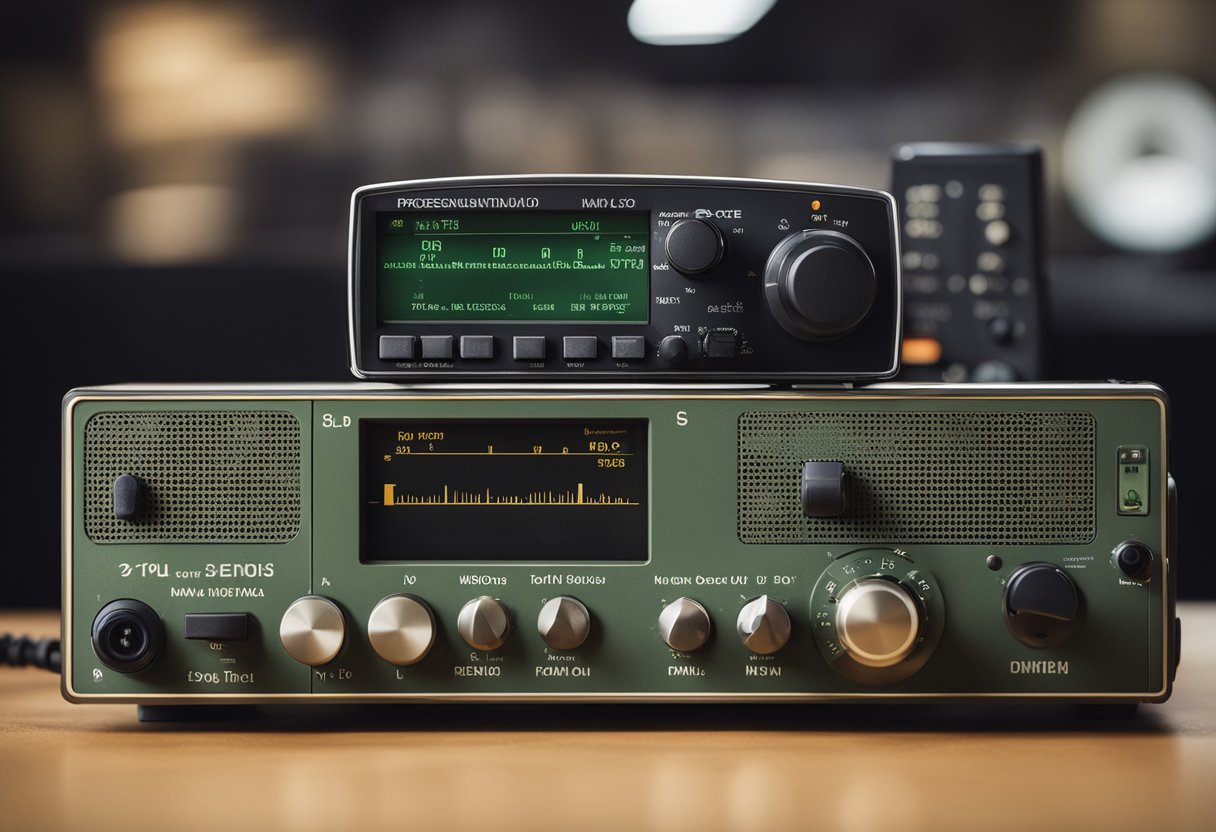Exploring the world of radio communications reveals a wide spectrum of applications, with ham radio and military radio prominently serving different needs and communities. Ham radio, known for its accessibility to civilians, offers a means of hobbyist communication and emergency service, relying on amateur radio operators to maintain and operate stations. Alternatively, military radio systems are highly specialized assets tailored to provide secure, reliable, and robust communications for national defense purposes, often employing encrypted signals and dedicated frequencies.


Despite being designed for distinct purposes, both ham and military radios operate on the principles of radio frequency transmission and can vary widely in their range, capabilities, and technological sophistication. The ham radio community, bound by regulatory frameworks like those managed by the Federal Communications Commission (FCC), is characterized by its provision for hobbyists to communicate over vast distances, while military radios are optimized for tactical operations in a variety of challenging environments.
Key Takeaways
- Ham radio offers open access for hobbyist communication, while military radio serves secure, tactical defense communications.
- Both systems utilize the fundamentals of radio frequency but differ in operation and regulation complexities.
- Integration efforts highlight the potential for cooperative use in scenarios like emergency response.
Understanding Radio Communications
Radio communications play a crucial role in connecting people and conveying information over various distances. By manipulating and understanding the radio frequency (RF) spectrum, users from amateur radio enthusiasts to military personnel can send and receive messages across the globe.
Radio Frequency (RF) Spectrum
The RF spectrum is the range of electromagnetic frequencies used to transmit radio waves. It is divided into bands that designate the frequency ranges for different types of communications, from AM and FM radio broadcasts to specialized military frequencies. The Federal Communications Commission (FCC) governs the civilian use of these frequencies, imposing regulations to prevent interference between users.
Modulation Methods
Modulation is the process of altering radio waves to carry information. Frequency Modulation (FM) varies the frequency of the carrier wave, while Amplitude Modulation (AM) varies its amplitude. Both methods are used in different contexts: FM for high-fidelity broadcasts and AM often for longer-range but lower-quality transmissions. Military radio systems may use more complex modulation schemes for security and reliability.
Propagation Conditions
Propagation conditions affect how radio waves travel and are a critical factor in communication quality. Various atmospheric layers can reflect or refract radio waves, influencing how far and how clearly a signal travels. HF waves, for instance, can bounce off the ionosphere to enable long-distance communication, while VHF and UHF usually require a line-of-sight path.
Radio Bands and Licensing
Access to radio frequencies is regulated by the FCC, with different bands allocated to services like amateur radio (ham radio), commercial broadcasting, and emergency communications. Amateur radio operators must obtain a license—Technician, General, or Amateur Extra—by passing an exam that demonstrates knowledge of FCC rules, operating procedures, and technical expertise.
Security and Encryption
Security is paramount in radio communications, especially for military applications. Encryption and frequency hopping are common techniques used in military radios to prevent eavesdropping. In contrast, amateur radio typically operates using open communication where security is maintained through protocol rather than technology.
Equipment and Hardware
Effective radio communication requires proper equipment and hardware. A basic setup includes a radio transmitter and receiver, an antenna, and power source. Devices range from handheld models like the Baofeng UV-5R to more complex mobile radio setups. Military radio equipment is often ruggedized to withstand harsh environments and provide consistent, reliable service under adverse conditions.
Ham Radio Characteristics
Ham radio, or amateur radio, is distinguished by its open access to a variety of frequency bands and its potential for public service. It is both a hobby and a means for technical experimentation.
Amateur Radio Usage
Amateur radio is primarily intended for non-commercial use, with the goal of self-training, intercommunication, and technical investigations carried out by amateur radio operators—often referred to as “hams.” These individuals range from hobbyists enhancing personal communication skills to volunteers providing emergency communications during natural disasters.
Licensing and Privileges
To operate a ham radio, one must obtain a license from the Federal Communications Commission (FCC) in the United States. There are three main license classes: Technician, General, and Amateur Extra, each granting escalating privileges. These licenses require passing an examination that demonstrates proficiency in technical theory, operating practices, and legal regulations.
- Technician Class: Basic privileges across VHF and UHF bands.
- General Class: Extends operating privileges to global communication on HF bands.
- Amateur Extra Class: Grants access to all frequencies allocated to amateur radio.
Each licensed operator is assigned a unique call sign used to identify their transmissions.
Radio Services and Bands
Hams have access to multiple frequency bands over the radio spectrum, specifically in the High Frequency (HF), Very High Frequency (VHF), and Ultra High Frequency (UHF) ranges. These bands allow for both local and worldwide communication, with the HF band often used for international and shortwave communication. Additional services like the General Mobile Radio Service (GMRS) and Family Radio Service (FRS) are related but distinct, with different requirements and limitations.
- HF radio: Typical range of 1.8 to 30 MHz (e.g., for international communications).
- VHF: Ranges from 30 to 300 MHz (e.g., for local and regional communications).
- UHF: Covers 300 MHz to 3 GHz (e.g., for very local communications).
Public and Amateur Participation
Ham radio plays a crucial role in disaster response through organizations like the Amateur Radio Emergency Service (ARES). Additionally, Military Auxiliary Radio System (MARS) affiliates with the armed forces to assist in communications during emergencies or security drills. The community of hams is diverse, contributing to public service as well as fostering international goodwill through the exchange of QSL cards to confirm radio contacts.
- ARES: Amateur operators trained for emergency situations and infrastructure failure.
- MARS: Provides auxiliary communication for military and federal entities during emergencies.
Military Radio Specifications


Military radio is essential for robust and secure communication in various operations. This section details the intricacies of military radio specifications, focusing on the communication networks, the operational security protocols, and the unique capabilities that differentiate them from civilian radio systems.
Military Communication Networks
Military communication networks are meticulously structured to ensure persistent and reliable linkage across all divisions of the Defense Department, including the Army, Navy, and Air Force. These networks span multiple frequencies, from HF to satellite communications, facilitating the relay of messages across vast distances and often through challenging conditions. They are designed to maintain connectivity in a manner that civilian ham radio systems can’t, often by integrating satellite and line-of-sight technologies.
Operational Security and Protocols
Operational security in military radio communication is paramount. Communications must remain secure to prevent interception or disruption by adversaries like China or Russia. Strict protocols, such as encryption and frequency-hopping, are employed to achieve information security. An example is the use of the Military Auxiliary Radio System (MARS) for an additional layer of communication redundancy. Furthermore, coded language and brevity codes ensure that if a message is intercepted, its content remains unintelligible to unauthorized parties, aligning with the DoD‘s security guidelines.
Unique Military Capabilities
Military radio equipment embodies several unique capabilities tailored to the rigors of military use. It operates effectively over a broad range of environmental conditions and includes features like immediate break-in for urgent communications, often referred to as “break” and “clear” in transmission protocol. Additionally, extended frequency coverage, durable hardware suited for field use (HT or handheld transceivers), and the ability to establish networks rapidly in the field are all characteristic of military radios. Military radios also facilitate routine and immediate information exchange, ensuring communication is maintained at all times without the risk of eavesdropping or interference.
Military radios are crucial to the operations of defense forces, providing secure, reliable, and versatile communication.
Comparing Ham and Military Radio
Understanding the distinctive roles and capabilities of ham and military radio is critical across various applications, particularly in terms of performance, regulations, and usage during emergencies. Each system has been developed with specific scenarios and requirements in mind, impacting their effectiveness in communication.
Performance Across Scenarios
Ham radio, or amateur radio, operates effectively across a broad range of terrain and weather conditions, offering communication where traditional means may fail. The individual expertise of operators, combined with satellite communication and the ability to bounce signals off the International Space Station, enhances the range and versatility of ham radio. Conversely, military radio is purpose-built for robustness in extreme conditions, featuring encrypted channels and secure networks to maintain viable communication, even in combat or similarly strenuous environments.
Accessibility and Regulatory Differences
The Federal Communications Commission (FCC) dictates that anyone can become a ham radio operator provided they pass an examination that demonstrates their understanding of regulations, morse code, and radio theory to earn their license. The amateur radio spectrum is regulated but offers a range of privileges in terms of frequencies. Military radios, however, are restricted to authorized military personnel and operate under stringent protocols that exceed the requirements for ham radio.
Use in Emergency and Disaster Response
In emergencies and after natural disasters, ham radio has proven invaluable in re-establishing communication when traditional infrastructure is compromised. Ham radio volunteers are often primary actors in establishing networks for emergency communication, relaying crucial information, and coordinating aid. Military radios are similarly crucial in emergencies, often augmented by technology like satellite phones when cell service infrastructure is disrupted or non-existent.
Technological Evolution and Trends
While both ham and military radios adapt to changing technological landscapes, ham radio remains more accessible to advancements for hobbyists. Military equipment, on the other hand, typically involves proprietary technology evolved for specific defense needs. Still, both communities engage with trends like the move to digital from analog or the integration of internet-linked communication systems, balancing tradition with modernization.
Integration and Interoperability
In the realm of communication, the emphasis on integration and interoperability remains paramount. These concepts are especially crucial when considering cross-service communication and the effective use of different frequency bands and modes of transmission for military and amateur radio operators.
Cross-Service Communication
Military operations often rely on high frequency (HF), very high frequency (VHF), and ultra high frequency (UHF) radio systems to enable secure and reliable communications across various services. The complexity of these systems necessitates interoperability for mission success. Traditionally, challenges have arisen when diverse military departments attempt to establish communication links, due to differing radio technologies and protocols.
Amateur radio operators, commonly referred to as hams, frequently assist with emergency communications. During emergencies, they can provide a relay or bridge across frequencies and services, offering a versatile communication network. While amateur radios primarily operate within VHF and UHF bands, ham operators are adept at using HF for long-distance communication, making them valuable in cross-service operations.
Efforts to improve interoperability often involve innovations in radio technology, as well as collaborative exercises that involve amateur radio operators. These exercises not only test the capability of cross-service communication but also enhance the protocols for integrating various communication platforms, thus ensuring that different entities can communicate effectively during joint operations or emergencies.
Frequently Asked Questions
Exploring the nuances between ham and military radios reveals substantial differences in terminology, technology, and regulations. This section seeks to clarify these distinctions through targeted questions and answers.
What are the key differences in frequency ranges between ham radios and military radios?
Ham radios typically operate within designated amateur radio bands that range from 1.8 MHz in the HF spectrum up to 275 GHz in the EHF range, with gaps between the bands. In contrast, military radios encompass these and additional frequency ranges, utilizing specially allocated military bands that are not accessible to the public for national security reasons.
Can ham radio operators legally intercept military communications?
It is generally illegal for ham radio operators to intercept encrypted military communications. While they may accidentally receive such transmissions due to their own equipment’s broad capabilities, intentional interception or decoding without authorization is prohibited.
How do the sound qualities and transmission clarity compare between ham and military radios?
Military radios are often engineered to provide clear and robust sound quality even under adverse conditions, employing noise-canceling techniques and encryption to maintain transmission clarity. Amateur radios might face more interference and generally lack the advanced filtering and encryption found in their military counterparts.
Are there any legal restrictions on civilian use of ham radios that resemble military radio capabilities?
Civilian use of ham radios is regulated by the Federal Communications Commission (FCC). Civilians must adhere to specific bands, refrain from transmitting encrypted messages, and avoid engaging in activities that mimic military communications, which are outside the scope of typical ham radio use.
What technological features differentiate military radios from amateur or ham radios?
Military radios frequently embody advanced technology such as frequency hopping, encryption, and robust build for combat scenarios. They may have greater power output and durability to ensure consistent performance in challenging environments. Amateurs’ radios, while sophisticated, do not typically match the military’s heightened specifications.
In what ways do the purposes or uses of ham radios contrast with those of military radios?
The primary use of ham radios is for hobby, communication during emergencies, and non-commercial experimentation. Military radios, however, are designed for strategic communication, command and control, intelligence gathering, and other operations critical to military objectives.





